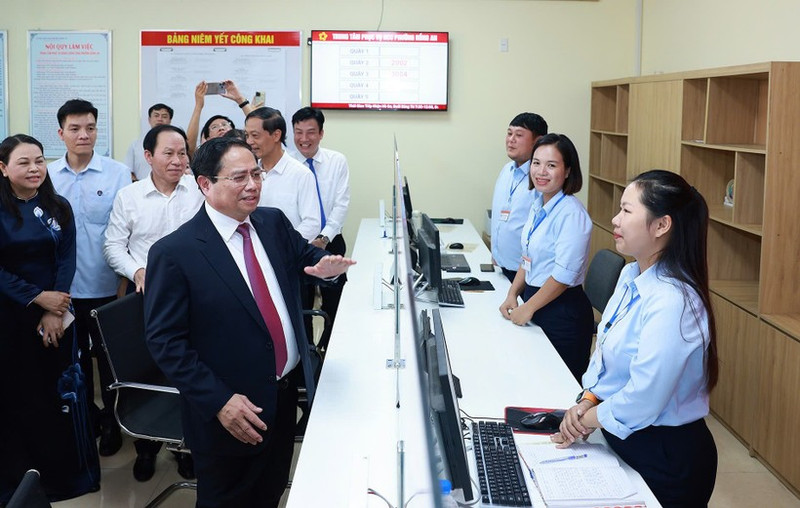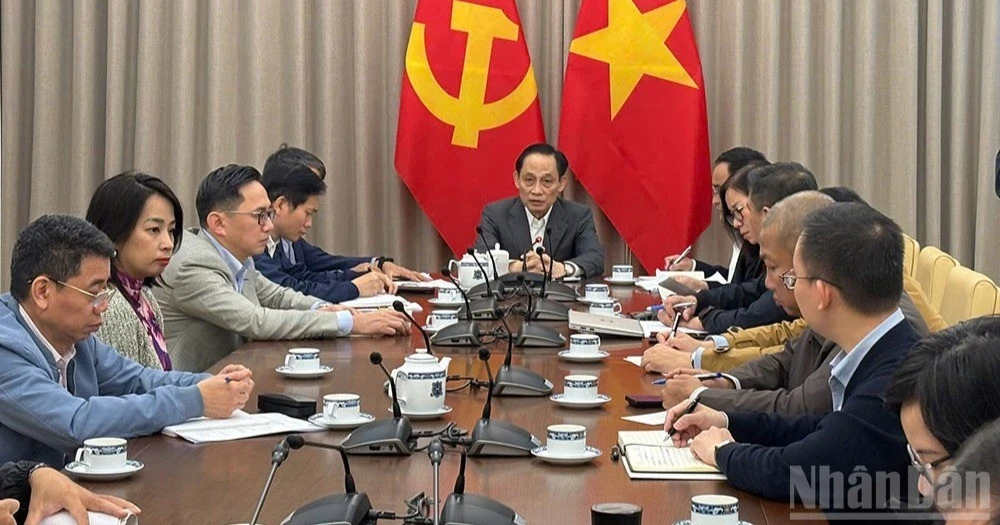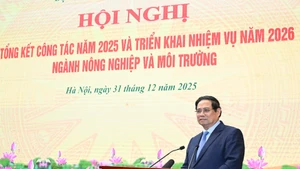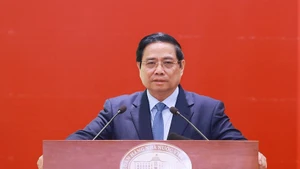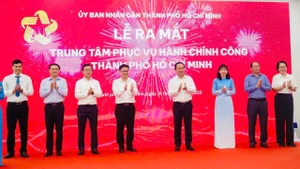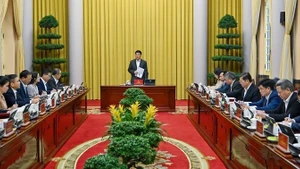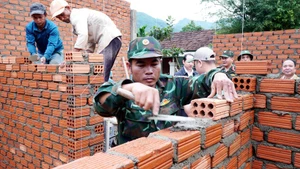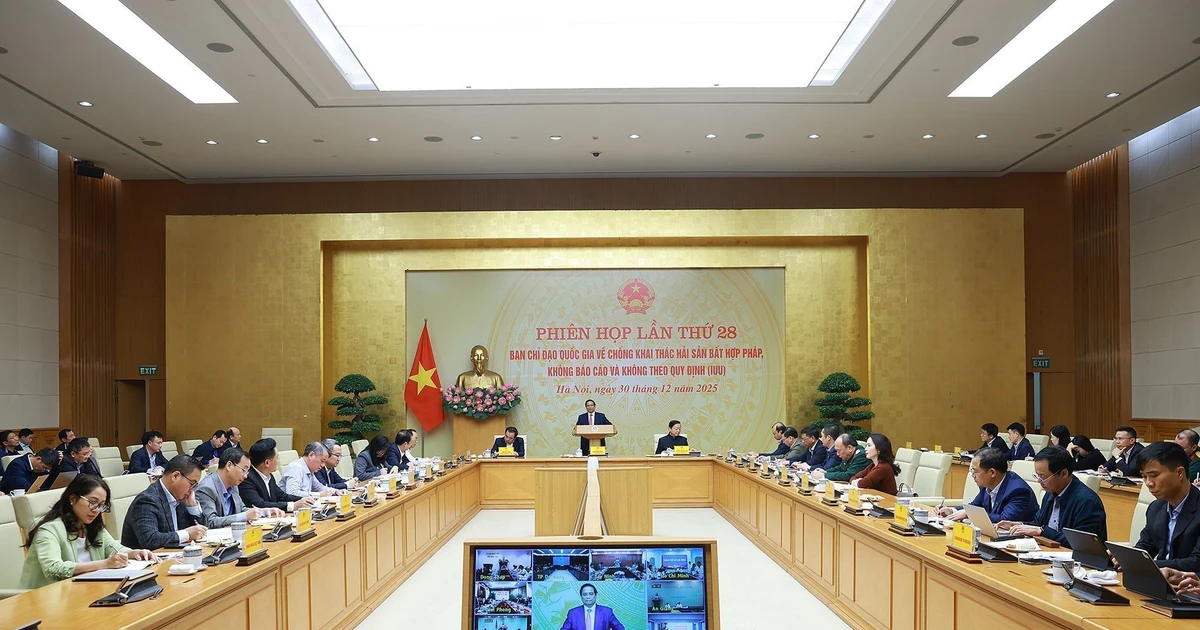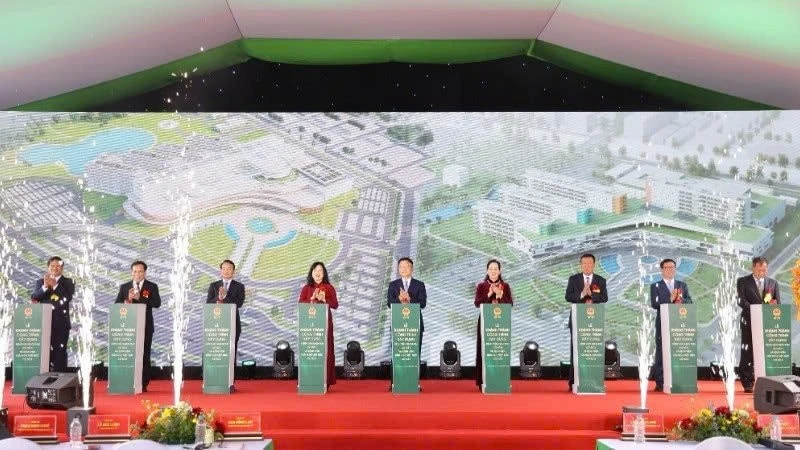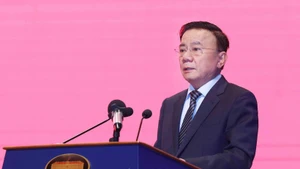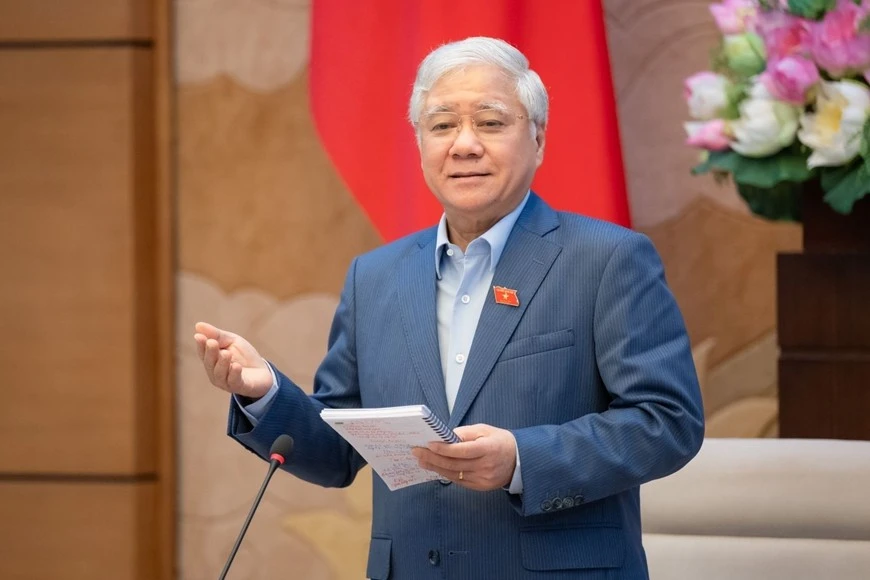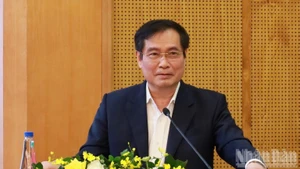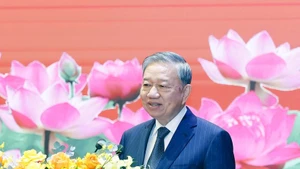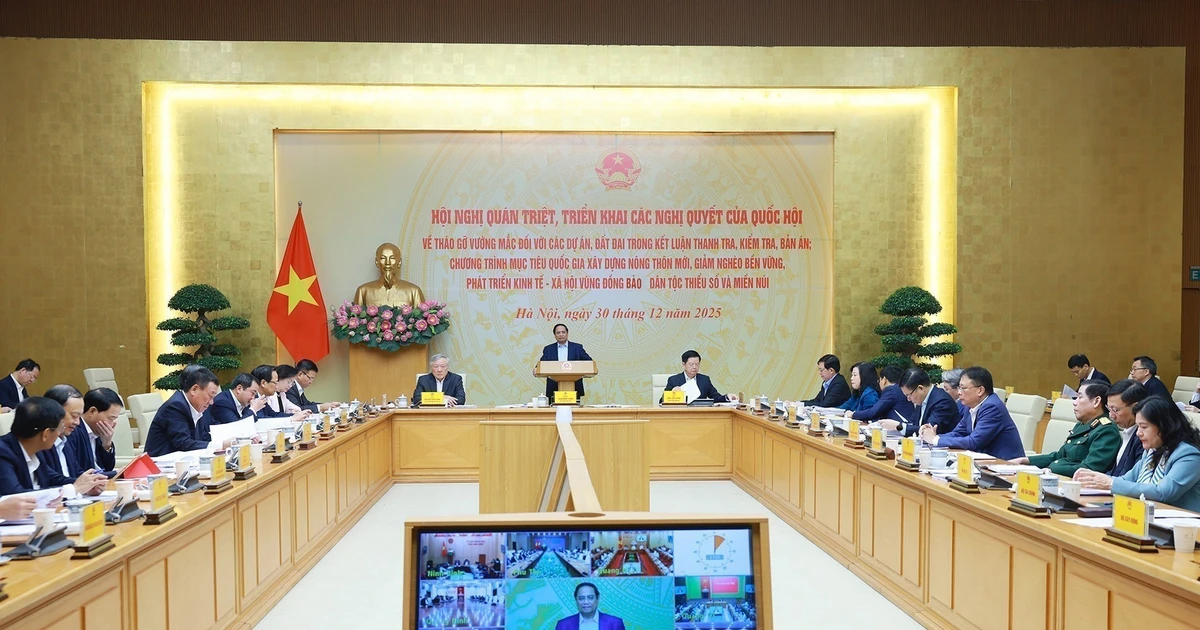Measuring effectiveness by public satisfaction
From the very first day of implementing the two-tier local government model, Prime Minister Pham Minh Chinh personally inspected operations in Hong An Ward, Hai Phong City. There, he spoke directly with residents, listening to their concerns about administrative procedures. He instructed ward officials to remain close to the people, serve them wholeheartedly, and for Party committees, local authorities, the Viet Nam Fatherland Front, and socio-political organisations to internalise this principle: the more digital transformation advances, the closer officials must be to the people, with empathy, responsibility, and duty.
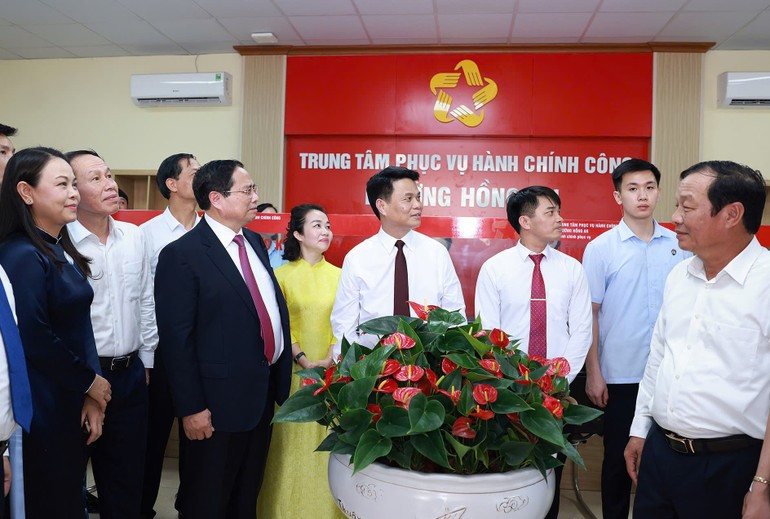
From “administration” to “service”
In Ninh Kieu Ward (Can Tho City) and My Hiep Commune (Dong Thap Province), the new model has operated smoothly from the outset, without disrupting public services. The Prime Minister called for a shift in mindset: “From an administrative system of control to one that is creative and service-oriented.”
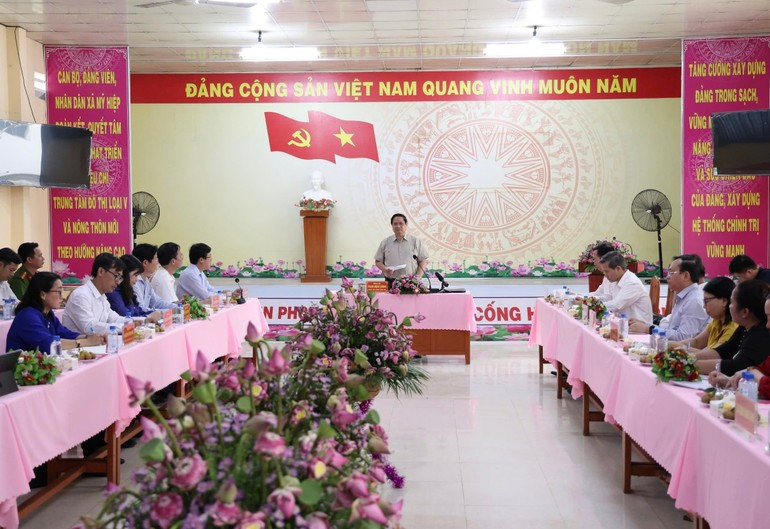
This is why, in pioneering localities, commune and ward officials have been working beyond regular office hours, forming community-level digital transformation teams, and even mobilising students to help residents unfamiliar with technology. This ensures that commune–ward governments not only “follow the right process” but also “deliver exactly what people and businesses need.”

From passive to proactive
Visiting Thoi Son Ward, with a 5.5km border with Cambodia, two border markers, a natural area of 49.36 sq km, and a population of 33,045 (including 3.2% Khmer ethnic minority), Prime Minister Chinh stressed that the two-tier local government model must move from passivity to proactivity, serving the people and businesses with energy, creating new momentum and development space, and operating in a seamless, effective, and efficient manner. Localities must renew their thinking, act creatively and decisively, and shift from administrative management to a creative, service-oriented approach.

He urged Thoi Son Ward to review and restructure its personnel apparatus proactively, flexibly, and in line with reality, ensuring uninterrupted operations. The ward should also coordinate closely with relevant forces to safeguard border security, and mobilise the Viet Nam Fatherland Front, mass organisations, youth, and women’s groups to promote green – clean – beautiful movements, contributing to sustainable local development.

Serving people as a mission
According to the Ministry of Home Affairs, after just over a month in operation, the two-tier local government apparatus has achieved initial stability and smooth functioning. Most localities have completed organisational arrangements, ensuring administrative operations continue without interruption. Newly merged provinces and newly established communes have quickly come into operation, leaving no management gaps and delivering better services to the public.
To date, 32 out of 34 localities have established provincial-level Public Administrative Service Centres, and 32 out of 34 have set up 3,127 commune-level centres. Ha Noi and Quang Ninh operate a one-tier model with branches or service points.
Over the past month, public administrative services have been maintained continuously, without disruption during the transition. The National Public Service Portal has been upgraded and is seamlessly connected with all 34 provincial administrative procedure systems, meeting the technical requirement to serve 120,000 concurrent users (CCU). From July 1, 2025, to date, peak usage has reached over 50,000 concurrent users, more than 41.6% of capacity.

Despite major changes in administrative boundaries, political security and social order have been maintained throughout and after the restructuring. Coordination from the central to local levels has been smooth and consistent, with the Government, the Prime Minister, and ministries intervening promptly to resolve local difficulties.
In the first month alone, more than 60 guidance documents were issued, and dozens of inspection teams deployed to the field. Administrative procedures have been cut, decentralisation and delegation, accompanied by resource allocation, have been promoted, capacity enhanced, and oversight strengthened. The Government has issued 28 decrees decentralising and delegating 556 administrative procedures from the central to local levels; 18 procedures have been reassigned from district to provincial level, and 278 to commune level; 74 procedures have been abolished.
The Ministry of Home Affairs acknowledges that shortcomings remain, requiring timely resolution, particularly in the institutional and legal framework for two-tier local government. Many sub-law documents have yet to be issued or updated, hampering implementation.
On organisation and personnel: staffing remains uneven, with both surplus and shortage in places, and some officials failing to meet requirements. Commune-level cadres are not synchronised, some localities have too many deputies, others lack staff or have limited capacity. Restructuring after mergers still faces obstacles. On decentralisation: although progress has been made, authority between government levels remains overlapping and unclear, causing management difficulties.
On finance and budgets: many localities report that commune-level budgets remain limited and inadequate for their expanded responsibilities. Financial mechanisms are not yet fully streamlined, causing implementation challenges.
On operational conditions: IT infrastructure in some areas, particularly remote ones, remains poor; working facilities and conditions for serving the public are uneven.
On communications: public awareness of the two-tier model remains limited, affecting consensus among officials and the public. While some public service centres function effectively, many remain formalistic and underperforming.
Prime Minister Chinh urged ministries, sectors, and localities to adopt a spirit of decisive and effective action, resolve tasks promptly and clearly, and avoid evasion of responsibility. Leaders must take initiative within their functions, step up inspections, remove obstacles, and inspire public participation in nation-building and defence.

He emphasised completing the legal framework and organisational consolidation after administrative restructuring; decentralisation and delegation must go hand in hand with resource allocation and strong oversight. Ministries should provide clear guidance to provinces and communes on procedures, budgets, and staffing, alongside inspection to prevent deviations.
On finance, mechanisms must be adapted to the new model, supporting newly established localities, using budgets and public assets effectively, and ensuring consistent planning.
He also called for accelerating online public services, fixing system errors by August 2025, boosting policy communication, and listening to grassroots feedback. All levels, especially leaders, must embrace new thinking, act decisively, and coordinate closely, particularly in digital transformation.
The Prime Minister insisted there must be no legal delays to hold back the new model, and no grassroots officials operating with old mindsets in a new system. The first month has been a smooth start, but it must be consolidated with substance and continuous action.
From the specific demands of citizens applying for documents to the broader question of organisational reform, all evidence points to this: the two-tier local government model will only have real value when every official understands their role as a servant of the people, not as a ruler.
